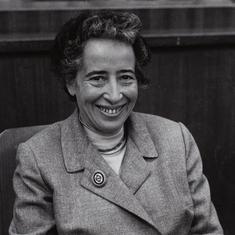“Pata nahi hai rule ka kuch bhi. Vijender bhai ke liye aaya huun” (I don’t know the rules, I’m here for Vijender Singh)
This was a beaming Siddhant Arora who had come with his friends Kriti, Anish and Radhika for Vijender Singh’s match against Kerry Hope, a former EBU middleweight champion from Australia. After a year spent doing the rounds of Dublin, Liverpool, Manchester and Bolton, Singh’s promoters had finally taken the call to challenge for the vacant WBO Asia Pacific Super Middleweight title, and to do so at home. This match was his debut in professional boxing in India, and was held at the Thyagaraj Indoor stadium in New Delhi.
India’s hope for glory and success
Vijender Singh’s journey from young, upcoming boxer featuring in one-off newspaper and magazine snippets in the mid 2000s to instant national sensation after getting a bronze at the 2008 Beijing Olympics is well charted.
So is the country’s lack of knowledge with aspects of the sport at even the amateur level, and their subsequent waning of interest in the hard yards it took to stand on those podiums in Beijing, Delhi, Melbourne, Glasgow, Milan, Guangzhou and Doha .
What was important was the medal, and tongues were clicked at media reports of partying, hobnobbing with celebrities, acting in Bollywood movies. Familiarity with Singh’s excellent conversion rate at international championships brought contempt for his occasional failures.
And so it remained when he took what must have been a well thought out and carefully considered decision to turn professional. But now the naysayers were ignored, and a single-minded and focused Vijender took it upon himself to see his dream of winning world championship belts come true.
The boy from sunny Bhiwani moved to the gloomy, rainy city of Manchester, a step which itself shows his dedication to his craft. The fantastic response from the Delhi crowd at his debut bout must have felt like a small vindication of his decision, and a positive first step on the road to achieving greatness.
No more Mr Nice Guy – Unlearning and Relearning the craft
Growth and success in a relatively alien format of the sport doesn’t come to even a three-time Olympian simply by showing up at the ring. At 31, Singh has had to unlearn and learn boxing as rigorously and punishingly as he would have had to all those years ago at the Bhiwani Boxing Club. His trainer Lee Beard is a hard taskmaster, and understood early on in their sessions that his ward needed that edge in the ring. That spite and fire.
Beard has worked extensively on Singh’s fluency and movement in the ring. Speaking to PTI, he said, “All his amateur experience has been a huge help for him because he has won on some very big occasions — Olympics, World Championships. By the time he turned pro, he had already learnt to deal with pressure. He was smart and skillful even before he came to me. I have only added to his game, made him think differently,” Beard said.
“I have tried to make him punch harder and harder and use his jab more. His footwork used to slow him down because as an amateur he used to run around in the ring. The main thing he has unlearnt is the footwork from amateur days with regards to running around the ring. It’s no good for a 10-round bout,” he added.
Another aspect of the Singh’s game that Beard worked hard on was his defence.
“He is more fluent now, there is bit more rhythm. His defence is also so much better now. Now when you see him in the ring, it is not easy to connect to him because he is walking, turning, his defensive jab has improved a lot. His all-round understanding, his patience and control over the fight has improved.
“He can’t be reached that easily. I have educated him about energy because in Olympics it is just three rounds so the pace is very fast. But in pro, you have to slow it down a bit.
“When I spoke about energy with him I said ‘V, there is a glass of water here, when you drink it the level goes down, imagine that is your energy. So if you are in the fight, and every time you throw a punch, it is like you are drinking and the level will go down. So you have got to be careful that you don’t empty it before the final bell’,” explained the Manchester-based coach.
.@boxervijender pummelled his opposition to bag his fifth consecutive fight!#NightOfTheChampions pic.twitter.com/8xB7ZQkht6
— IOS Boxing (@IOSBoxing) December 10, 2016
Preparation and mental focus the key for Singh
Vijender Singh himself has followed the old adage that if you don’t have a strategy, you’re part of someone else’s strategy. His next opponent, Francis Cheka, holds a WBF World Title, and has close to 17 years of professional experience. It will take all of Vijender Singh’s guile, experience and strength to best what would be his toughest opponent till now at this level.
The match will be held on the 17th of December 2016 at the Thyagaraj Stadium, and should hopefully see Delhi turn up in big numbers again to celebrate their hero. They might not understand the rules of professional boxing yet, but Siddhant, Kriti, Radhika and Anish will probably be there for Vijender bhai with more friends in tow.
The common refrain in media and by sportspersons over the past few years has been that the Indian audiences are largely ignorant of most sports apart from their national love, cricket. However, one of the reasons this complaint has grown even shriller in the past few years is that there is a rising percentage in the country willing to support teams, sportspeople and even push their own children into taking up sports as a career.
With stories such as Vijender’s being told across the country with adulation and respect, there might be cause for hope yet.










